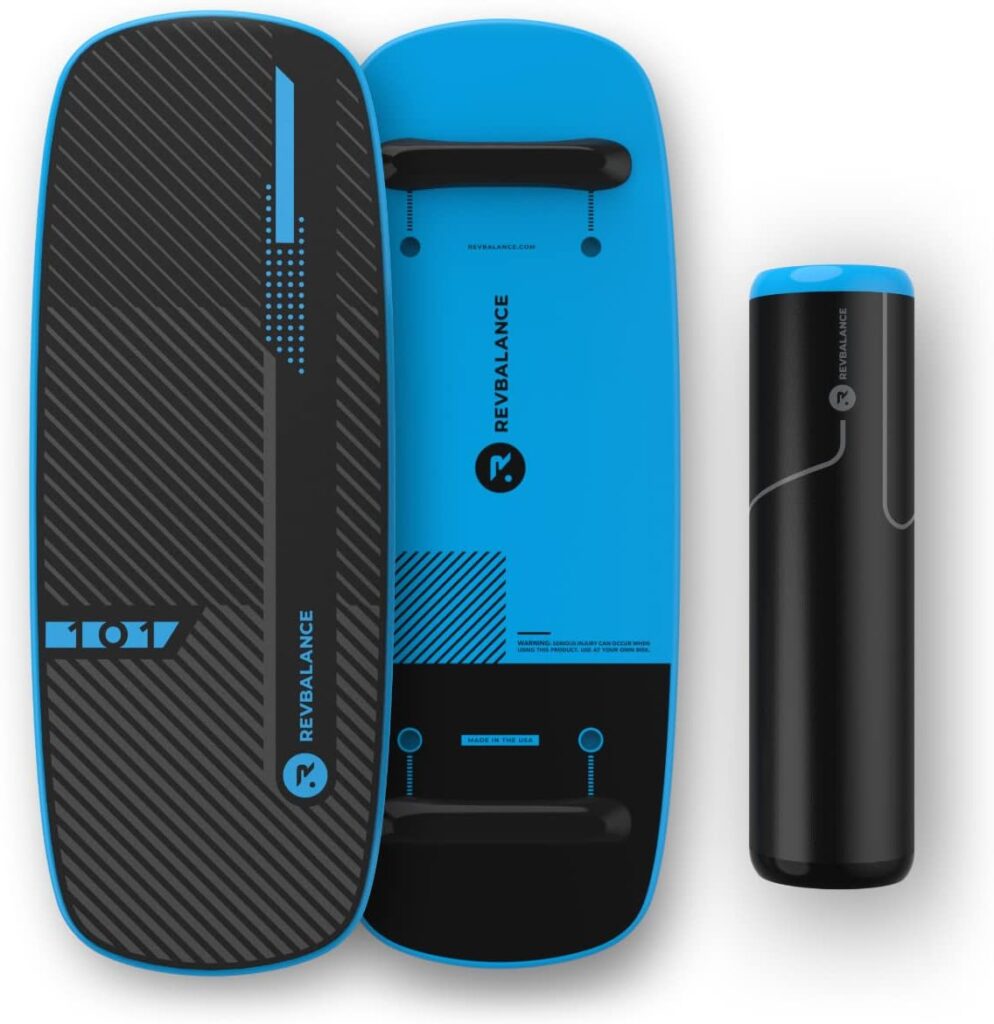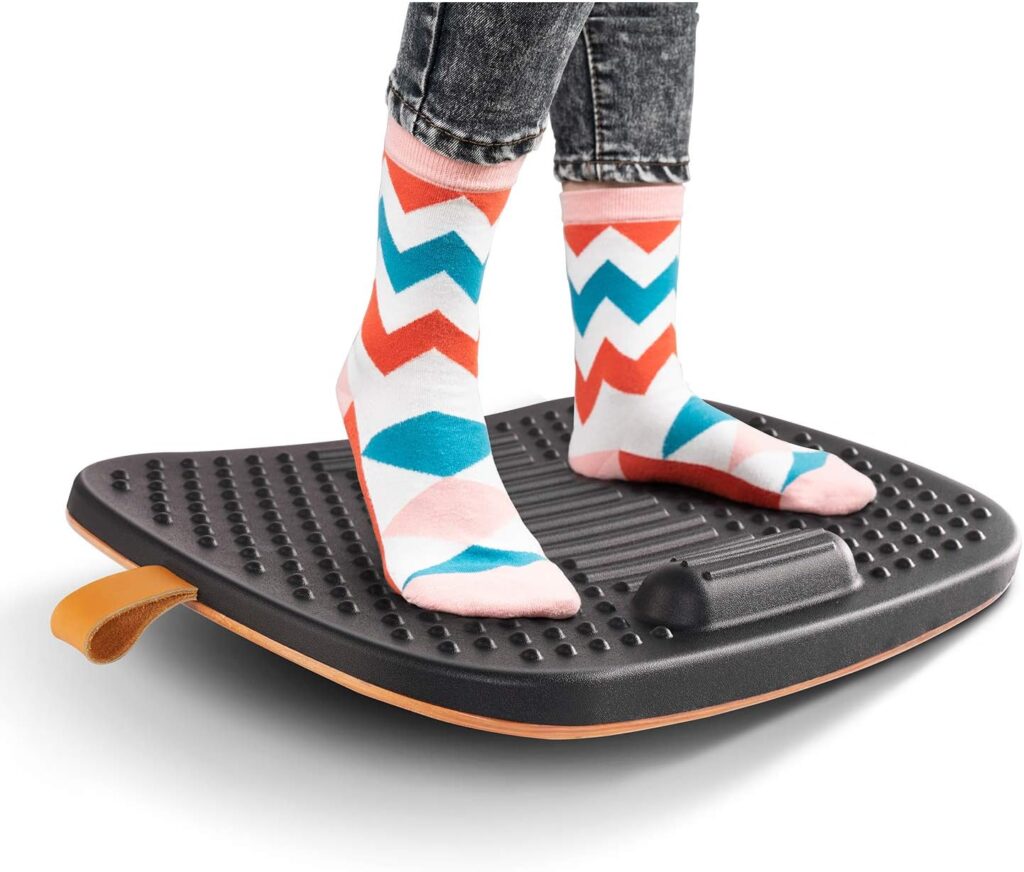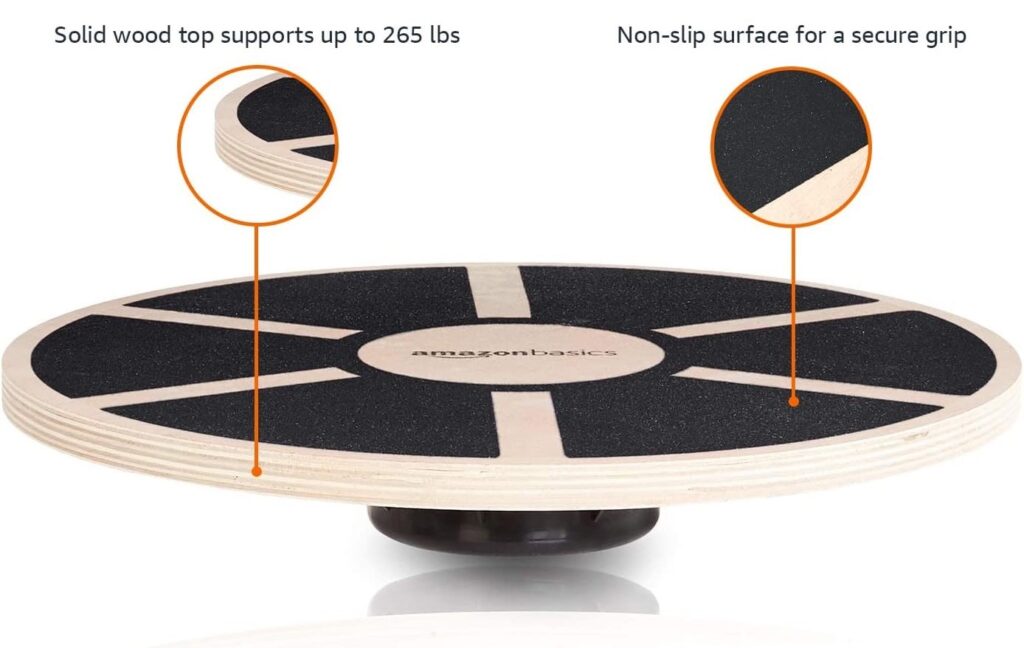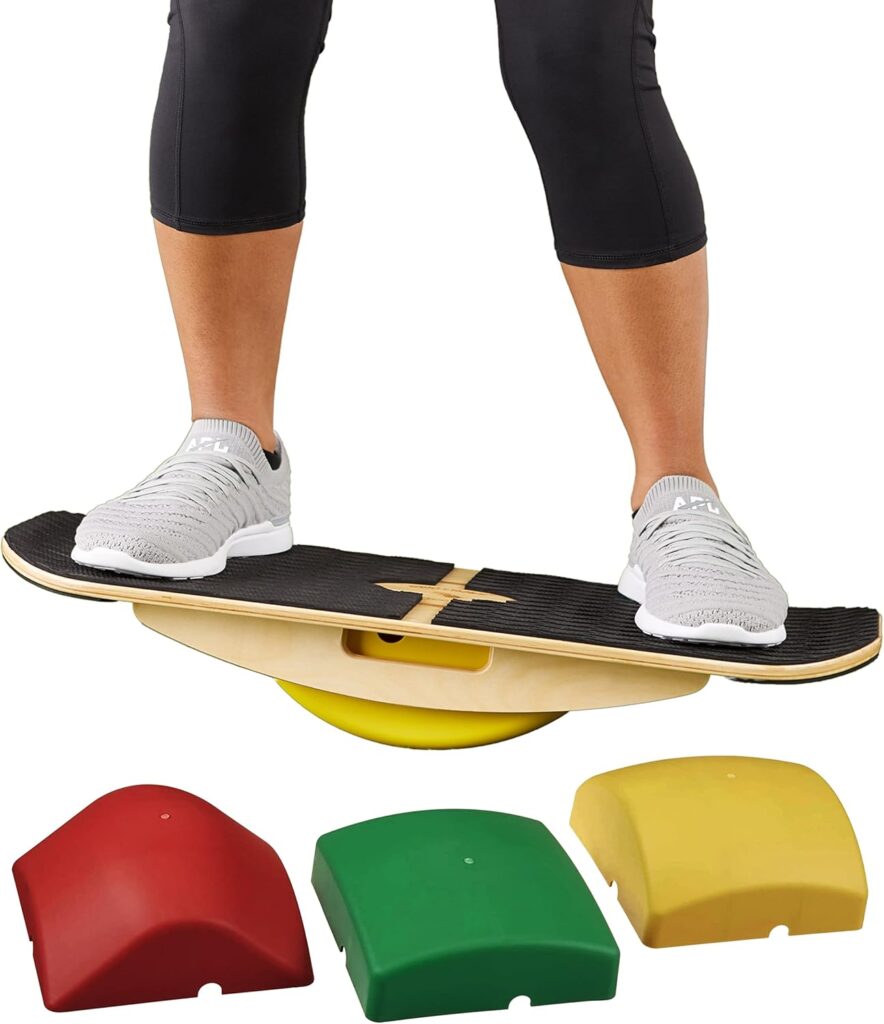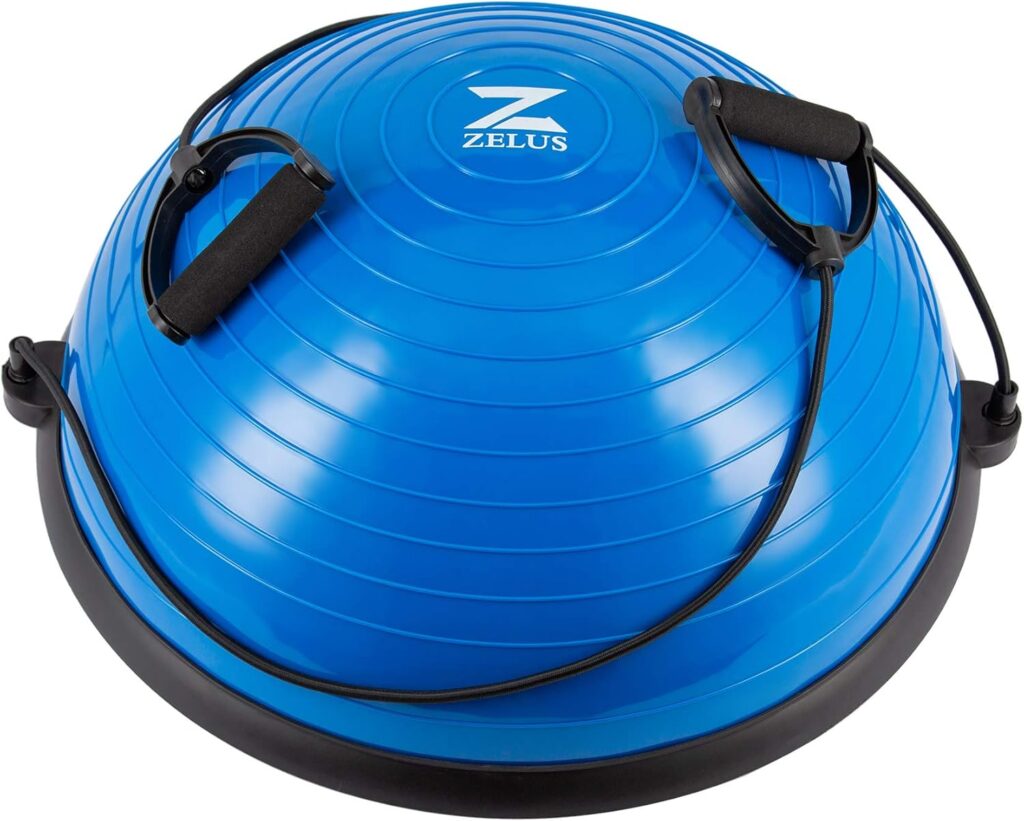Best Balance Boards for Beginners
Balance boards have become increasingly popular among fitness enthusiasts and those looking to improve their overall stability and core strength. These versatile tools offer a fun and challenging way to enhance balance, coordination, and proprioception – skills that are essential for everyday activities and sports performance.
For beginners, choosing the right balance board can make a significant difference in training experience and progress. This comprehensive guide explores the top five balance boards specifically designed for novice users, helping you make an informed decision on which might be the best fit for your needs.
Key Factors for Beginner-Friendly Balance Boards
Before diving into our top picks, let’s consider some key factors that make a balance board suitable for beginners:
Stability
A good beginner balance board should offer a moderate level of challenge without being too difficult to control. Look for boards with a wider base or adjustable difficulty settings.
Safety Features
Non-slip surfaces, durable construction, and rounded edges are essential to prevent accidents and injuries during use.
Versatility
Boards that can be used for many exercises or in various settings provide better value for beginners and allow for progression as skills improve.
Ease of Use
Simple designs that don’t need complex setup or extra equipment are ideal for those just starting out.
Progression Potential
Choose a board that allows you to increase difficulty as you improve your skills, ensuring long-term usefulness.
Now, let’s explore our top five balance boards for beginners:
* This blog contains affiliate links, meaning I may earn a commission if you click through and make a purchase, at no additional cost to you. I only recommend products I trust and believe will add value to my readers.*
1. Best Overall Balance Board: Revolution Balance Boards 101
Price: $135.96
Rating: 4.8/5 (1,848 reviews)
Description:
This versatile board is designed for both fun and fitness. Perfect for beginners, the adjustable magnetic stops let you gradually increase difficulty as your skills improve. The durable construction and comfortable Durasoft traction surface make it suitable for barefoot or shoe use.
Key Features:
- Adjustable magnetic stops for controlled progression.
- Durable, scratch-free Durasoft traction surface.
- Includes a detailed digital guide for tips and tricks.
- Supports up to 400 lbs and handcrafted in the USA.
Why It’s Great:
With its adjustable settings and included instructional guide, this board is ideal for beginners looking for a progressive way to improve their balance skills. One of the standout features of this board is its roller design, which provides a 360-degree range of motion. This allows users to work on their balance in all directions, mimicking real-life movements and challenges.
*Check out the Revolution Balance Boards 101 HERE*
2. Best for Standing Desks: FEZIBO Standing Desk Mat with Anti-Fatigue Bar
Price: $79.99 (Large size)
Rating: 4.5/5 (3,788 reviews)
Description:
Designed as a dual-purpose balance board and anti-fatigue mat, the FEZIBO is ideal for standing desk users. Its gentle 8.5° tilt encourages micro-movements that promote circulation and reduce fatigue.
Key Features:
- Lightweight and portable with a carrying handle.
- Gentle slope provides a manageable challenge for beginners
- Supports up to 320 lbs.
- Soft, non-slip surface for safe workouts.
- Suitable for exercises like push-ups, planks, and squats.
- Combines anti-fatigue mat benefits with balance training
Why It’s Great:
A perfect companion for work-from-home setups, this board keeps you active during long hours of standing, making it a functional and fun addition to your workspace. The anti-fatigue bar at the front of the mat allows you to stretch and massage your feet, promoting better circulation and reducing fatigue during long periods of standing.
*Check out the FEZIBO Standing Desk Mat HERE*
3. Best Budget Option: Amazon Basics Wood Wobble Balance Trainer Board
Price: $15.99
Rating: 4.6/5 (11,569 reviews)
Description:
A budget-friendly option for beginners, this solid wood balance board helps improve posture, core strength, and coordination. The compact design is perfect for home use. The wooden construction provides a stable and responsive surface, while the non-slip top confirms safety during use.
Key Features:
- Non-slip surface for a secure grip.
- Compact and lightweight.
- Ideal for a variety of exercises, including push-ups and standing poses.
- Supports up to 265 lbs.
- Allows for a 360-degree range of motion
Why It’s Great:
With a price tag under $20, this board is a great entry-level option for those curious about balance training. It’s simplicity also means there’s no complex setup required – you can start using it right out of the box. This wobble board provides a gentle, controlled rocking motion that’s ideal for beginners. It makes it easy to use for various exercises, from basic balancing to more advanced movements as you progress.
*Check out the Amazon Basics Balance Trainer Board HERE*
4. Best for All Fitness Levels: Blue Planet Balance Surfer
Price: $179.88 (Includes $18 coupon)
Rating: 4.6/5 (196 reviews)
Description:
This high-quality bamboo board features seven adjustable balance levels, making it one of the most versatile options for beginners and advanced users alike. The board features a curved design that allows for side-to-side and front-to-back movements, simulating the motion of riding a wave. This multi-directional movement challenges your balance and engages your core muscles more intensely than traditional balance boards.
Key Features:
- Unique design inspired by surfing
- 360-degree balance radius for varied challenges.
- Non-slip surface and wide deck for safety.
- Includes three balance modules for customization.
- Compact and portable design.
Why It’s Great:
The tool-less design allows users to switch between levels quickly, ensuring a steady progression in skill. Perfect for surfers, yogis, or anyone looking to enhance balance. The surfing-inspired movements can help develop functional balance skills that translate well to other sports and activities.
*Check out the Blue Planet Balance Surfer HERE*
5. Best for Full Body Workout: ZELUS Balance Ball Trainer with Resistance Bands
Price: $69.99
Rating: 4.4/5 (3,185 reviews)
Description:
This inflatable half-ball trainer combines balance training with strength exercises. The included resistance bands make it a full-body workout tool. It consists of an inflatable ball securely attached to a sturdy base. This design provides a dynamic, unstable surface that challenges your balance and engages your core muscles.
Key Features:
- Multifunctional design allows for a wide range of exercises
- Made from durable, non-toxic PVC.
- Includes resistance bands and a foot pump for easy setup.
- Supports up to 330 lbs.
- Non-slip base for enhanced stability.
Why It’s Great:
The multi-functional design is perfect for beginners who want to incorporate core strength training alongside balance exercises. The stability ball provides a challenging yet manageable surface for balance work, while the resistance bands allow for upper body and core exercises. The included resistance bands can be attached to the base, allowing for a wide range of strength training exercises to be incorporated into your balance routine.
*Check out the ZELUS Balance Ball Trainer HERE*
Benefits of Using Balance Boards for Beginners
Incorporating balance board training into your fitness routine can provide many benefits, especially for beginners. Here are some of the key advantages:
Improved Balance and Stability
Balance boards challenge your proprioception – your body’s ability to sense it’s position in space. Regular use can significantly improve your overall balance and stability, which is crucial for everyday activities and sports performance.
Enhanced Core Strength
Maintaining balance on an unstable surface engages your core muscles constantly. This leads to improved core strength and stability, which can help prevent back pain and improve posture.
Better Coordination
Using a balance board needs coordination between different muscle groups. As you practice, you’ll notice improvements in your overall body coordination and control.
Increased Ankle Strength and Flexibility
Balance board exercises can help strengthen the muscles and ligaments around your ankles, potentially reducing the risk of ankle sprains and improving overall foot and ankle health.
Cognitive Benefits
Balancing needs focus and concentration, which can help improve cognitive function and mental acuity. It’s a great way to engage both your body and mind simultaneously.
Low-Impact Exercise
Balance board training is generally low-impact, making it suitable for people of all ages and fitness levels. It’s an excellent option for those looking to improve their fitness without putting excessive stress on their joints.
Versatility in Training
Many balance boards can be used for a variety of exercises beyond just standing balance. This versatility allows for a more comprehensive workout and keeps your training interesting and engaging.
Improved Posture
As you work on maintaining balance, you’ll naturally become more aware of your body positioning. This increased body awareness can lead to improved posture in your daily life.
Enhanced Athletic Performance
The skills developed through balance board training can translate to improved performance in many sports and physical activities.
Fun and Engaging Workouts
Balance board exercises can be enjoyable and challenging, making it easier to stick to your fitness routine. The element of play involved in balance training can make workouts feel less like a chore and more like a fun activity.
Tips for Getting Started with Balance Board Training
If you’re new to balance board training, here are some tips to help you get started safely and effectively:
Start Slow
Begin with short sessions of just a few minutes at a time. As you build confidence and skill, gradually increase the duration of your balance board workouts.
Use Support
When first starting out, practice near a wall or sturdy piece of furniture that you can hold onto for support if needed. This will help you feel more secure as you get used to the unstable surface.
Focus on Proper Form
Pay attention to your posture and body alignment while on the balance board. Keep your core engaged, your shoulders relaxed, and your knees slightly bent.
Barefoot or Socks
For better control and sensory feedback, try using the balance board barefoot or with non-slip socks. This can help you develop a better feel for the board and improve your balance more quickly.
Incorporate Rest Periods
Allow time for rest between balance board sessions. This gives your muscles and nervous system time to recover and adapt to the new challenges.
Combine with Other Exercises
As you become more comfortable, try incorporating other exercises while on the balance board, such as squats, lunges, or upper body movements with light weights.
Be Patient
Improving balance takes time and consistent practice. Don’t get discouraged if you find it challenging at first – progress will come with regular use.
Stay Safe
Always use your balance board on a flat, non-slip surface. Clear the area around you of any objects that you might bump into if you lose balance.
Listen to Your Body
If you experience any pain or discomfort while using the balance board, stop immediately and ask with a healthcare professional if necessary.
Set Goals
Establish specific, achievable goals for your balance board training. This can help keep you motivated and track your progress over time.
Incorporating Balance Board Training into Your Routine
To get the most out of your balance board, it’s important to incorporate it into your routine regularly. Here are some suggestions for making balance board training a consistent part of your fitness regimen:
Daily Practice
Aim for short, daily sessions of 5-10 minutes to start. Consistency is key when it comes to improving balance and stability.
Warm-Up Tool
Use your balance board as part of your warm-up routine before other workouts. This can help activate your core and improve your body awareness for the exercises to follow.
Active Breaks
If you work from home or have a standing desk, take short breaks throughout the day to spend a few minutes on your balance board. This can help break up long periods of sitting or standing and keep you more active throughout the day.
Combine with Other Exercises
As you become more comfortable on the balance board, try incorporating it into your strength training or yoga routine. For example, you could do bodyweight squats or lunges while balancing, or use it to add an extra challenge to your plank exercises.
Balance Challenges
Set up balance challenges for yourself, such as trying to maintain balance with your eyes closed or while performing simple tasks like brushing your teeth or reading a book.
Post-Workout Cool Down
Use your balance board as part of your cool-down routine after other workouts. This can help improve recovery and maintain your focus on balance and stability even after more intense exercises.
Family Fun
If you have a family, make balance board training a fun activity that everyone can join in. You can set up games or challenges to keep it engaging for all ages.
Mindfulness Practice
Combine your balance board training with mindfulness or meditation practices. The focus required to maintain balance can be an excellent anchor for mindfulness exercises.
Travel Companion
If you have a portable balance board, consider taking it with you when you travel. It’s a great way to maintain your fitness routine even when you’re away from home.
Progressive Overload
As with any form of exercise, gradually increase the difficulty of your balance board training over time. This could mean longer sessions, more challenging positions, or incorporating extra movements or weights.
Common Mistakes to Avoid in Balance Board Training
While balance board training can be highly useful, there are some common mistakes that beginners should be aware of and avoid:
Overexertion
Trying to do too much too soon can lead to fatigue, frustration, or even injury. Start with short sessions and gradually increase duration and difficulty.
Neglecting Proper Form
Poor posture or alignment while on the balance board can reduce the effectiveness of your training and potentially lead to injury. Always focus on maintaining good form.
Inconsistent Practice
Sporadic use of your balance board won’t yield significant results. Consistent, regular practice is key to improving your balance and stability.
Ignoring Safety Precautions
Failing to use the balance board in a safe environment or neglecting to clear the area around you can lead to accidents. Always prioritize safety during your training.
Skipping the Warm-Up
Jumping straight onto a balance board without properly warming up your muscles and joints can increase your risk of injury. Always take a few minutes to warm up before your session.
Focusing Only on Standing Balance
While standing balance is important, neglecting other exercises and movements on the balance board limits your potential for improvement. Explore different exercises and challenges to get the most out of your training.
Holding Static Positions for Too Long
While maintaining balance is important, holding static positions for extended periods can be counterproductive. Incorporate dynamic movements and shifts to challenge your balance more effectively.
Neglecting Upper Body Engagement
Many people focus solely on their lower body when using a balance board. Remember to engage your upper body and core as well for a more comprehensive workout.
Comparing Progress to Others
Everyone’s balance journey is different. Avoid comparing your progress to others and focus on your own improvement over time.
Not Progressing Your Training
Sticking to the same exercises and difficulty level for too long can lead to plateaus in your progress. Gradually increase the challenge of your balance board training to continue seeing improvements.
People Also Asked
What are the benefits of using a balance board?
Balance boards improve stability, core strength, coordination, and proprioception. They also enhance ankle strength, posture, and overall fitness.
How long should a beginner use a balance board?
Beginners should start with short 5-10 minute sessions, gradually increasing duration as they become more comfortable. Consistency is more important than long sessions.
Can balance boards help with fat loss?
While not primarily a fat loss tool, balance boards can contribute to overall fitness and calorie burning when used regularly as part of a comprehensive exercise routine.
Are balance boards safe for seniors?
Balance boards can be safe and useful for seniors when used properly. It’s advisable to start with more stable options and always have support nearby.
Consulting a healthcare professional is recommended.
Can I use a balance board every day?
Yes, daily use of a balance board is generally safe and can be useful. However, it’s important to listen to your body and allow for rest if you experience fatigue or soreness.
What muscles does a balance board work?
Balance boards primarily engage core muscles, leg muscles (including calves, quadriceps, and hamstrings), and ankle stabilizers. They also work smaller stabilizing muscles throughout the body.
How do I choose the right balance board for me?
Consider factors like your current fitness level, intended use, available space, and budget. Beginners should opt for boards with wider bases or adjustable difficulty levels.
Can balance boards help with back pain?
Balance board exercises can strengthen core muscles and improve posture, potentially alleviating some types of back pain. However, ask a healthcare professional before using a balance board if you have existing back issues.
Are balance boards good for rehabilitation?
Balance boards are often used in rehabilitation settings to improve balance, proprioception, and strength after injuries or surgeries. Always follow the guidance of a healthcare professional for rehabilitation purposes.
How do balance boards compare to other balance training tools?
Balance boards offer a versatile and challenging option compared to other tools like stability balls or foam pads. They provide a wider range of motion and can be adjusted for different skill levels.
Key Takeaways
- Balance boards are effective tools for improving stability, core strength, and overall fitness for beginners.
- When choosing a balance board, consider factors like stability, safety features, versatility, ease of use, and progression potential.
- The top 5 balance boards for beginners include the Revolution Balance Boards 101 Balance Board Trainer, FEZIBO Standing Desk Mat, Amazon Basics Wood Wobble Balance Trainer Board, ZELUS Balance Ball Trainer, and Blue Planet Balance Surfer.
- Start with short, consistent practice sessions and gradually increase difficulty as your skills improve.
- Incorporate balance board training into your daily routine for best results, using it for warm-ups, active breaks, or as part of your regular workout regimen.
